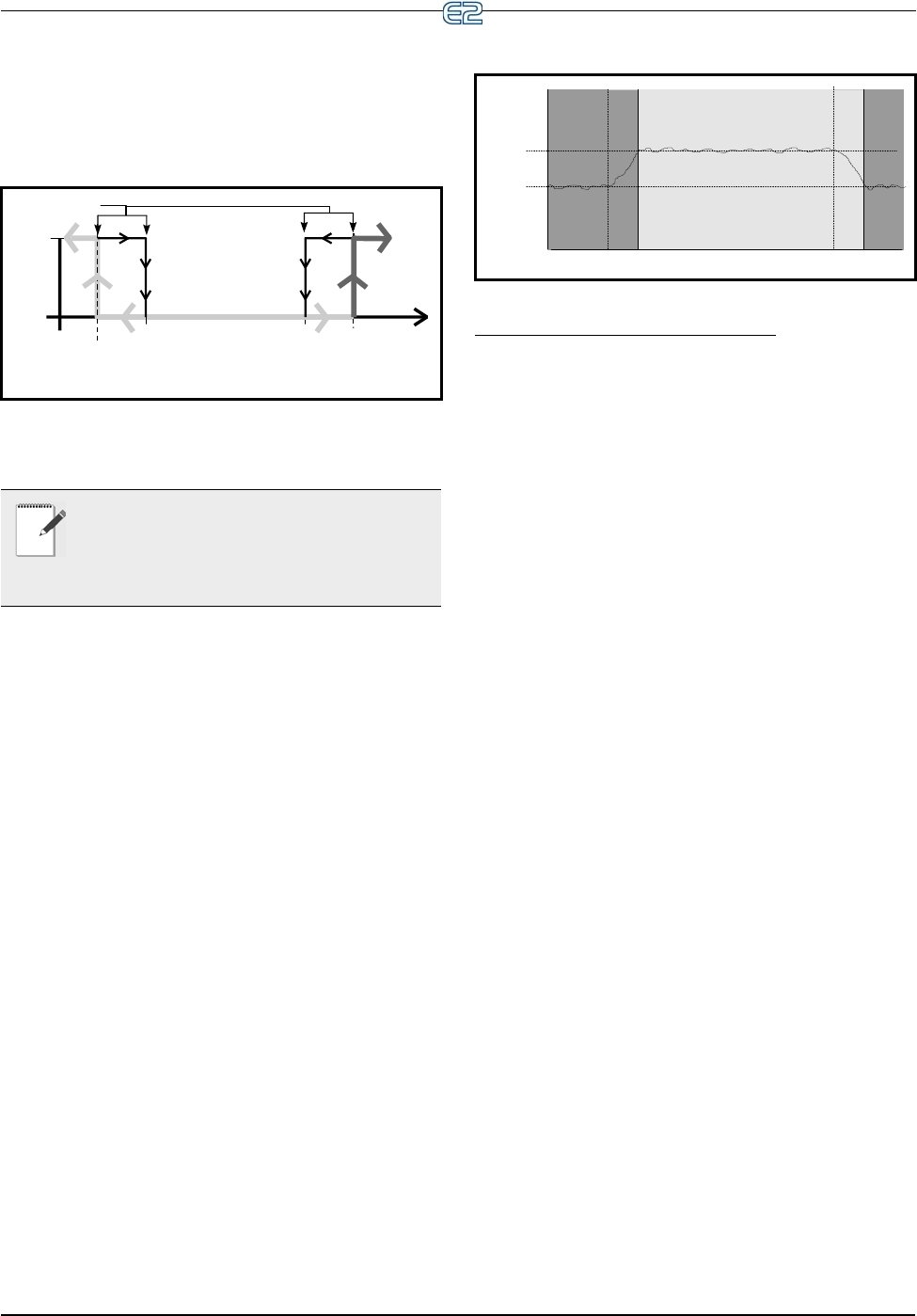
11-46 • E2 RX/BX/CX I&O Manual 026-1610 Rev 13 14-SEP-2011
drops to the Unoccupied Heating Setpoint or rises to the
Unoccupied Cooling Setpoint, the heat or cool outputs go
to 100% ON. They remain in this state until the tempera-
ture rises above the heating setpoint plus the hysteresis, or
below the cooling setpoint minus the hysteresis, at which
time the outputs will go to 0% ON.
11.17.3 Optimum Start/Stop (OSS)
Optimum Start/Stop (OSS) is a feature that works
alongside the Heat/Cool’s occupied and unoccupied tem-
perature control modes. OSS takes control of heating and
cooling several minutes before the building is scheduled to
change occupancy states, and prepares the building for the
upcoming change in setpoints. As a result, when the occu-
pancy state changes, the temperature will be comfortably
within the range of the new setpoint.
Figure 11-15 shows an example of how pre-starts and
pre-stops work in a heating application. From unoccupied
mode, the pre-start period ramps the temperature up
slowly so that when the scheduled change from unoccu-
pied to occupied mode occurs, the temperature will
already be at or near the occupied heating setpoint. During
the pre-stop, which occurs before the Heat/Cool goes from
occupied to unoccupied mode, heating is suspended and
the temperature is allowed to “coast” down to the unoccu-
pied setpoint.
Intelligent Pre-Starts and Pre-Stops
OSS is designed to handle pre-starts and pre-stops in
the most energy-efficient manner possible. Every time a
pre-start or pre-stop occurs, OSS measures the amount of
time it takes to bring the temperature from the previous
setpoint to within the “comfort zone” of the new setpoint
(a user-defined range of values above and below the set-
point within which the temperature is considered accept-
able). This duration is used to determine the average rate
of temperature change, called the K factor.
The K factor is stored in the memory along with the
average value of the outdoor air temperature during the
pre-start or pre-stop. Over time, collected K factor data
will be sorted and combined into a table. As a result, by
constantly observing and recording the results of previous
pre-starts and pre-stops, OSS will be able to intelligently
guess how much time a pre-start or pre-stop mode should
last based on the outside temperature.
Heat/Cools keep track of three different kinds of K fac-
tors:
• Heat K factor - used to guess pre-start durations for
Heat/Cools operating in heating mode.
• Cool K factor - used to guess pre-start durations for
Heat/Cools operating in cooling mode.
• Coast K factor - a measurement of the change in
temperature when no heating or cooling is active.
This is used to determine pre-stop durations for
both heating and cooling Heat/Cools.
11.17.4 Setpoint Reset
If desired, Heat/Cools may be configured with a Set-
point Reset that varies the value of the heating and/or
cooling setpoints based on an analog value from a reset
sensor. This is most often used to vary the value of a heat-
ing or cooling setpoint based on the outside air tempera-
ture.
To set up a setpoint reset for heating or cooling, the
user must specify the minimum and maximum range of
reset sensor values, and the maximum range of setpoint
Figure 11-26
- Unoccupied Hysteresis Mode
NOTE: OSS applies only to Heat/Cools that
use a time schedule to change occupancy
states. Overrides initiated by the digital OCC
STATE input will not initiate pre-starts or pre-
stops.
HEATING
SET POINT
COOLING
SET POINT
0%
100%
HYSTERESIS
TEMPERATURE
OUTPUT
26512035
Figure 11-27 - Diagram of Pre-Start and Pre-Stop Operation
OCCUPIED
SET POINT
UNOCCUPIED
SET POINT
UNOCCUPIED
UNOCCUPIED
PRE-START
OCCUPIED
PRE-STOP (COAST)
26512036


















